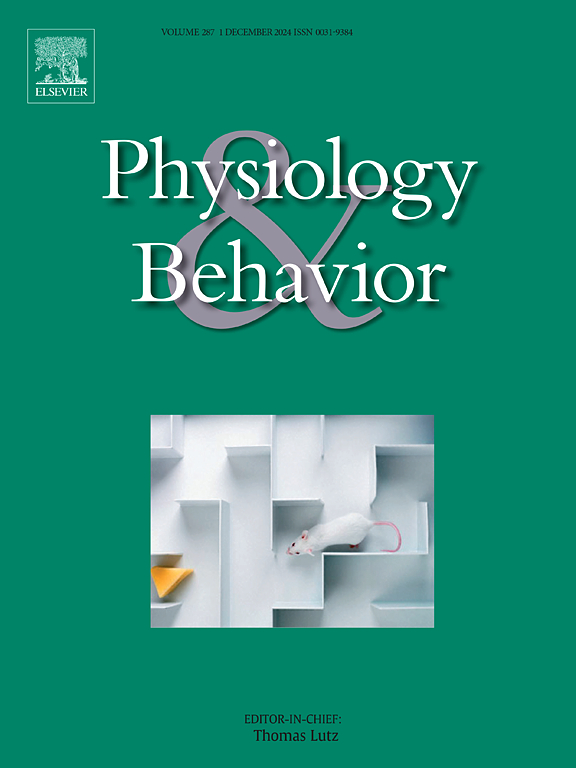Outdoor physical activity is more beneficial than indoor physical activity for cognition in young people
IF 2.4
3区 医学
Q2 BEHAVIORAL SCIENCES
引用次数: 0
Abstract
Background
Substantial evidence demonstrates the beneficial acute effect of physical activity and the outdoor environment independently on cognitive function. However, evidence for their potential synergistic effects remain unknown.
Methods
Following familiarisation, forty-five children (aged 11–13 years) took part in an identical physical activity session outdoors and indoors; and completed a battery of cognitive tests (Stroop test, Sternberg paradigm, and Flanker task) before, immediately post-, and 45 min post-physical activity.
Results
Following outdoor, compared to indoor, physical activity response time was improved more immediately post-physical activity on the 3-item level of the Sternberg Paradigm (-34 ms vs +14 ms; P = 0.001), at 45 min post-physical activity on the complex level of the Stroop test (-94 ms vs -20 ms; P = 0.002), the 1-item (-9 ms vs +71 ms; P = 0.026) and 3-item level of the Sternberg paradigm (-37 ms vs +69 ms; P < 0.001), and the congruent level of the Flanker test (-44 ms vs -14 ms; P = 0.001). Accuracy was also improved more outdoors (compared to indoors) immediately post-physical activity (+2.0 % vs +0.4 %; P = 0.036) and 45 min post-physical activity (+2.0 % vs +0.1 %; P = 0.043) on the complex level of the Stroop test and on the incongruent level of the Flanker test (no change vs -3 %; P = 0.008).
Discussion
This is the first study to demonstrate superior cognitive benefits of outdoor, compared to indoor, physical activity. The overarching finding of this investigation is that physical activity performed outdoors significantly improves cognitive function more than when performed indoors, suggesting a synergistic effect between physical activity and the outdoor environment.
户外体育活动比室内体育活动更有利于青少年的认知。
背景:大量证据表明,体育锻炼和户外环境可分别对认知功能产生有益的急性影响。然而,它们之间潜在的协同作用的证据仍然未知:在熟悉环境后,45 名儿童(11-13 岁)分别在室外和室内参加了相同的体育活动,并在体育活动前、体育活动后和体育活动后 45 分钟内完成了一系列认知测试(Stroop 测试、Sternberg 范式和 Flanker 任务):结果:与室内相比,室外体育活动后,在斯腾伯格范式的 3 个项目水平上,体育活动后立即反应时间的改善幅度更大(-34 毫秒 vs +14 毫秒;P = 0.001),体育锻炼后 45 分钟在 Stroop 测试的复杂水平(-94ms vs -20ms;P = 0.002)、Sternberg 范式的 1 项水平(-9ms vs +71ms;P = 0.026)和 3 项水平(-37ms vs +69ms;P < 0.001),以及 Flanker 测试的一致水平(-44ms vs -14ms;P = 0.001)上的反应时间均有改善。体力活动后室外(与室内相比)和体力活动后45分钟内,Stroop测试复杂水平和Flanker测试不一致水平的准确性也有较大提高(分别为+2.0% vs +0.4%;P = 0.036和+2.0% vs +0.1%;P = 0.043):这是第一项证明户外体育锻炼比室内体育锻炼对认知能力更有益处的研究。这项调查的主要发现是,在户外进行体育锻炼比在室内进行体育锻炼更能明显改善认知功能,这表明体育锻炼与户外环境之间存在协同效应。
本文章由计算机程序翻译,如有差异,请以英文原文为准。
求助全文
约1分钟内获得全文
求助全文
来源期刊

Physiology & Behavior
医学-行为科学
CiteScore
5.70
自引率
3.40%
发文量
274
审稿时长
47 days
期刊介绍:
Physiology & Behavior is aimed at the causal physiological mechanisms of behavior and its modulation by environmental factors. The journal invites original reports in the broad area of behavioral and cognitive neuroscience, in which at least one variable is physiological and the primary emphasis and theoretical context are behavioral. The range of subjects includes behavioral neuroendocrinology, psychoneuroimmunology, learning and memory, ingestion, social behavior, and studies related to the mechanisms of psychopathology. Contemporary reviews and theoretical articles are welcomed and the Editors invite such proposals from interested authors.
 求助内容:
求助内容: 应助结果提醒方式:
应助结果提醒方式:


